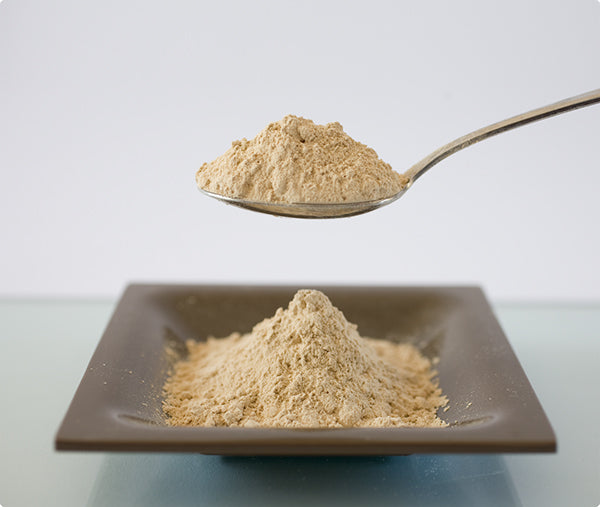

Protein powder blends are a new thing. It’s when you find multiple sources of protein in a product, from animal to plant-based. There are whey plus soy protein blends, rice protein plus pea protein blends, rice plus pea plus hemp protein blends—the combinations are limitless considering the increasing number of protein powders on the market. And while there are nutritional benefits to blended protein sources, there are quite a few reasons you may want to stick to a single-source plant protein powder, like Growing Naturals rice or pea proteins. Here are 7 reasons why:
1. Food Allergies and Intolerances
Allergies and intolerances are unique to each individual. You can be allergic or intolerant to one thing or twenty things. Proteins are what typically trigger food allergies, so having isolated (non-combined) sources of protein makes it easier to find something you could use rather than dealing with blends which may include something you couldn’t use. Although Growing Naturals proteins are considered allergen friendly (because they are devoid of all major allergens in addition to lactose, gluten and corn), on very rare occasion someone may be allergic to peas or rice, in which case they could still use the option they were not allergic to. FODMAPs are like the new gluten. Some people are actually intolerant to FODMAPs and may require a low-FODMAP diet although some moderate- or high-FODMAP foods may be tolerated in very small quantities. GN rice protein has been lab-tested to be low-FODMAP at any number of servings, whereas the pea protein is considered low-FODMAP at 2 servings maximum. If you were very sensitive to certain FODMAPs, you may feel more comfortable using the rice protein instead of pea protein.
2. Other Medical Reasons
Other medical reasons may warrant the use of one protein over another. For example, if you had chronic kidney disease (stage 1-3) you’d need dietary protein that was low in minerals such as sodium, potassium, and phosphorous. Generally, most dairy proteins are not favorable for kidney disease due to being high in those key minerals. New evidence indicates that plant proteins may be preferable for kidney disease because they have been shown to decrease protein content in the urine, slow the decline of glomerular filtration rate and result in less kidney tissue damage. Among plant proteins, rice protein alone makes the best fit as is it the lowest in those key minerals compared to pea protein.
3. Dietary Preferences
Following a paleo diet? Depending on which version you were following, some call for grain-free foods. In this case, pea protein would be a viable option rather than rice protein (although it technically isn’t the whole grain anymore).
4. Control and Convenience
It’s easier to add things in than trying to take them out in a recipe.Starting with “clean” protein powders (single source, with few added ingredients), gives you the control and convenience of adding whatever you may need at any given time. If you’re making a post-workout smoothie then you may consider adding other protein sources and carbs for optimal recovery. For a breakfast smoothie you may want to add fresh fruit, chia seeds and a handful of green leaves for long-lasting sustenance. But if you just want a pure protein boost, perhaps protein powder + water fits the bill perfectly. Growing Naturals’ “Original” unflavored pea protein contains absolutely no additives and the “Original” unflavored rice protein contains 4 ingredients total, 3 of which make up less than 3% of the formula. These options offer the most flexibility especially when creating savory recipes.
5. Taste and Flavor
Without any added flavoring, each protein powder has a unique intrinsic taste of its own. And based on your personal preferences you may prefer the taste of pea protein over rice protein or vice versa. Pea protein has a soft pea taste (not to be confused with earthy), whereas the rice protein has a blander taste profile which is more easily masked with other ingredients like berries or bananas.
6. Mouthfeel
Much like having their own taste, each protein also has its own mouthfeel. Dairy proteins are known for being smooth on the mouth. Similarly, pea protein is smooth and almost creamy-feeling on the mouth. On the other hand, being grain-based, rice protein has a slightly gritty texture (which can be easily disguised by mixing creamy ingredients like bananas or avocados).
7. Protein Functions
Proteins have specific functions in food preparation (e.g. baking) based on their unique, three-dimensional, chemical structures (i.e. in terms of chemistry, the way the amino acid molecules are arranged). For example, egg proteins provide the function of leavening in cakes--this is what makes cakes nice and spongy. They also provide emulsification and thickening in custards and sauces (among many other things). Pea protein is the most functional compared to rice protein and can actually be used to replace eggs in many recipes. While rice protein can also be used in baking, it will not replace or function like eggs the way pea protein does.
By: Scarlett Full, in-house Registered Dietitian
